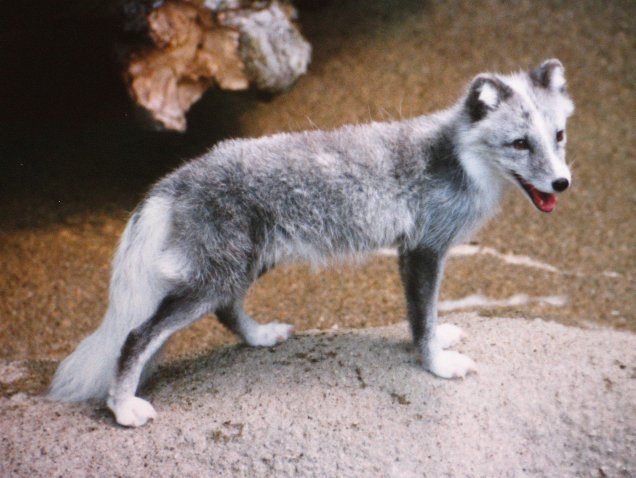

Vulpes lagopus
The Arctic Fox has evolved several adaptations for surviving the extreme cold of the Arctic regions of the Northern Hemisphere where it lives. For example, the thick fur of this fox is the warmest of any mammal, and is white or pale bluish-grey in winter and dark brown or darker bluish-grey in summer. It also has furry paws that allow it to walk on ice floors in search of food, and it can listen for movements of prey underneath the snow.
These foxes form monogamous pairs in the breeding season. The parents raise the young in a large den, which can be a complex underground network housing many generations of foxes. Young from a previous year’s litter may stay with the parents to help rear younger siblings. The tunnels, which many times connect several families, are usually dug during the winter. Some of those constructions can be up to 300 years old, with as many as 100 entrances. In the summer the fox will hide food in its den or under rocks, to use it later.
The above picture was taken at the zoo of Lansing, Michigan, in August 2003.
Genus Vulpes
Family Canidae
Superfamily Canoidea
Order Carnivora
Subclass Eutheria
Class Mammalia
Subphylum Vertebrata
Phylum Chordata
Kingdom Animalia
Life on Earth
Index